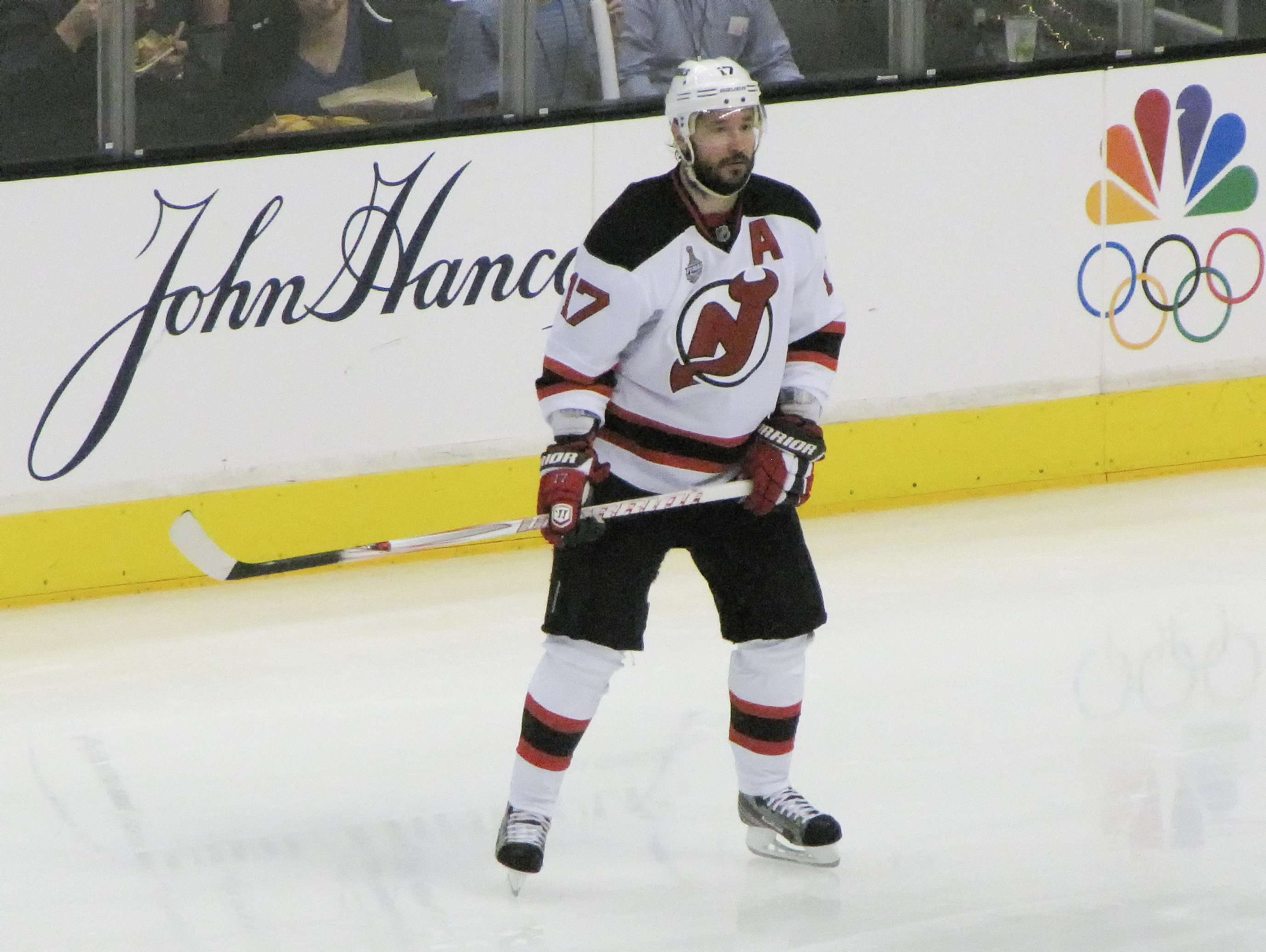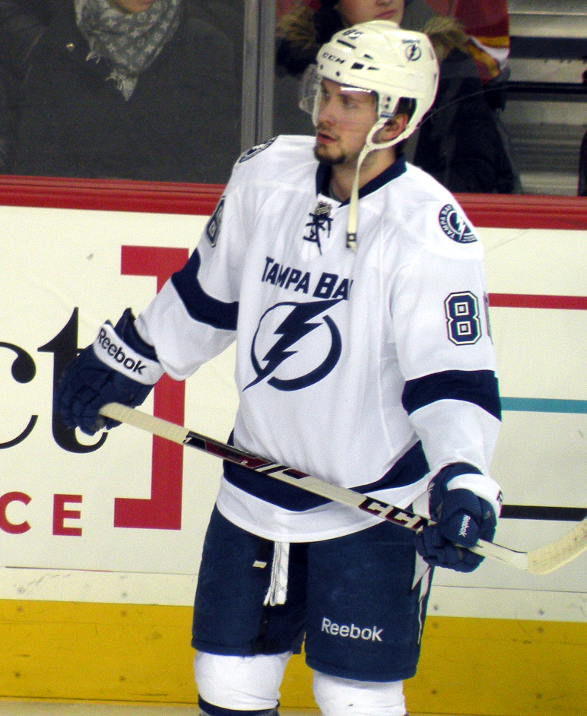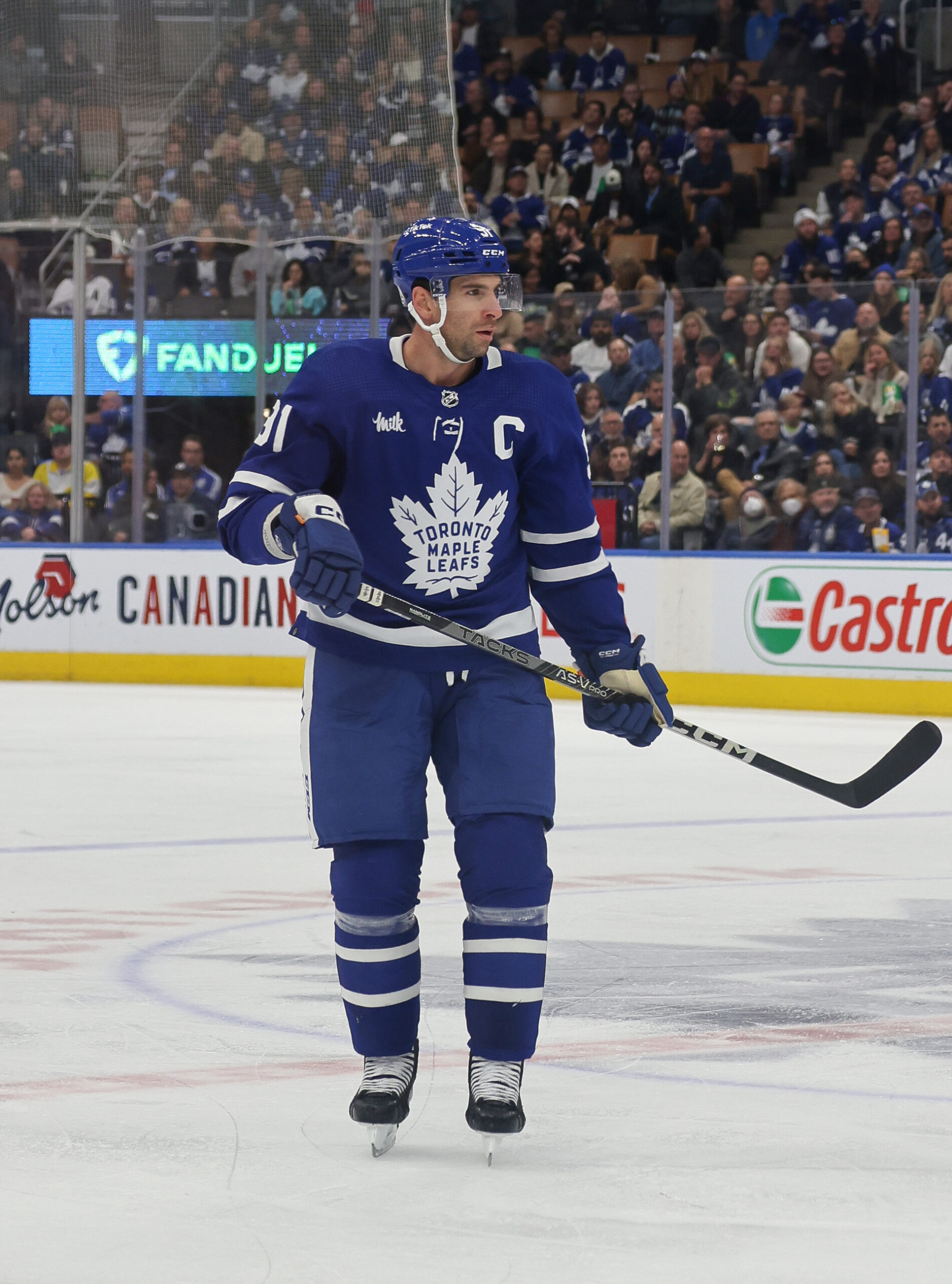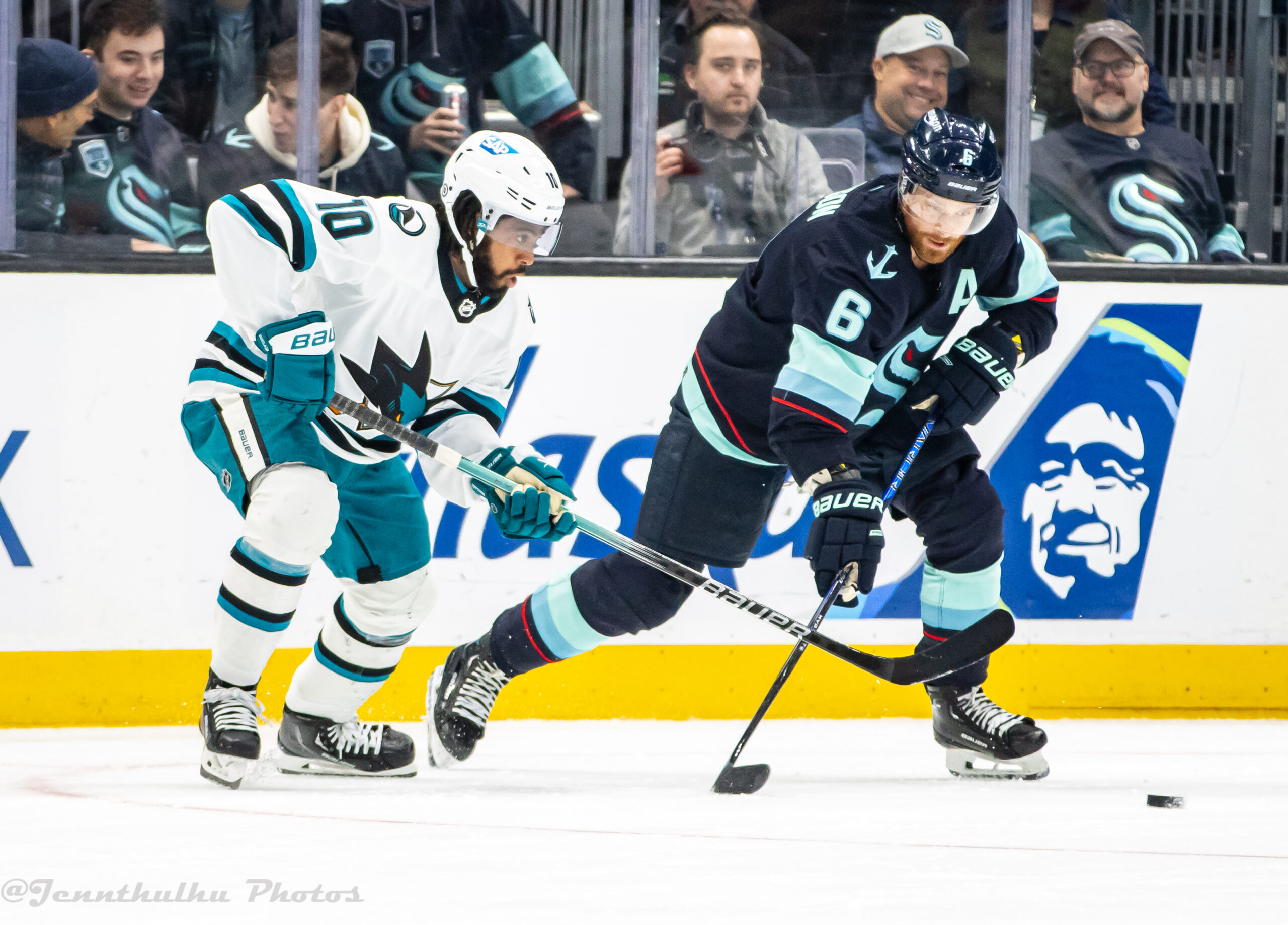By Alec Roberson
The second of our two part series on NHL salary cap manipulations will look at a relatively recent hot topic. That is utilizing long term injured reserve to exceed the salary cap in the postseason. Part I of this two part series covered teams taking on cap space in exchange for draft picks. If you have not had a chance to read that article check it out here.
A team utilizing long term injured reserve (“LTIR”) to exceed the salary cap upper limit during the playoffs most recently occurred involving the Tampa Bay Lightning. After missing much of the season to injury, the Lightning got Nikita Kucherov and Steven Stamkos back healthy in time for the playoffs. Technically, at that time the Lightning were around $18 million over the salary cap max limit. Because Kucherov was on LTIR during the season the Lightning were able to exceed the upper limit by his cap hit. In addition, the salary cap upper limit set annually does not apply to teams in the playoffs. Tampa was able to trade for players up to the adjusted upper limit during the year. Then, they brought back Kucherov during the playoffs without cap concerns.
Because this has been widely talked about almost excessively I want to start off by saying this IS a loophole under the NHL’s CBA BUT is not illegal cap circumvention. This article will show why it technically is not illegal, but also how this legal loophole could move into illegal cap circumvention territory.
The “Trick” Under the CBA
The explanation of this LTIR “trick” in the previous paragraphs is an oversimplification of the true mechanics under the CBA. The way it works is as follows.
1. Bon-Fide Long-Term Injury/Illness Exception
To utilize this loophole the stars have to align such that two different rules under the CBA apply. First, a team has to put a player on LTIR before the NHL trade deadline. Under Section 50.10(d) of the CBA, a team may utilize the “Bona-Fide Long-Term Injury/Illness Exception” if the team’s physician determines that a player is unfit to play due to injury, illness or disability in accordance with the team’s medical procedures to the extent that he would miss at least 24 calendar days AND 10 NHL games. (Note, this is actually how the CBA labels this status, long term injured reserve is more of the common term that has developed over time.)
This exception allows the team to put the player on LTIR (the “Long Term Injury/Illness Exception List” under the CBA), open up a roster spot for the team and have the team’s salary cap upper limit increased while the player is on LTIR. If a team’s physician determines a player is unable to play for at least 7 days, a team may place a player on an injured reserve list that allows the team to open up a roster spot BUT that player’s salary still counts against the team’s salary cap.
If the physician’s determination seems questionable, the NHL can challenge that determination. Under such a circumstance the NHL and the NHLPA are to promptly select a neutral physician to make a determination as to the player’s fitness to play. Remember this as we will circle back to this aspect later.
Once that player has become fit to play (assuming the 24 days and 10 games time frame has passed), the team must reduce its salary cap under the upper limit required under the CBA including the now fit player’s salary in that calculation.
Puckpedia has a good overview of some of the specific calculations when it comes to LTIR here.
2. Salary Cap Upper Limit Doesn’t Apply During Playoffs
So utilizing LTIR to bring in other players under the salary cap really only helps a team to the extent that the player on LTIR remains on LTIR if they are pushing up against the salary cap upper limit. This is where part two of this loophole comes into play….
During the NHL playoffs the salary cap does not apply. In theory, after the trade deadline a team should not be able to bring in additional players that would affect their cap. So, in some ways the cap doesn’t seem to matter. That is until LTIR comes into play.
If a player was on LTIR before the trade deadline, the team could then bring in additional players up to their new salary cap upper limit. The player previously on LTIR could then return in the playoffs but his salary cap hit wouldn’t matter since the cap doesn’t apply.
Legal Loophole or Illegal Cap Circumvention?
So is this “trick” legal? The short answer is yes. As explained above, the technicality of it checks out. There are probably a few reasons why this has become such a hot topic with Kucherov and the Lightning.
One is that he is an “elite” player. He has been one of the top point producers in the league during the regular season and playoffs last year and the playoffs this year. Hockey is a team sport that needs the “right” players not necessarily the “best” (thank you Coach Brooks). However, would this have been as much of an issue if the player involved was, say, Luke Schenn for the Lightning? He really was just a depth defenceman. It is hard to imagine anyone would have made a big deal about it under that circumstance.
Another reason is that Kucherov missed the entire regular season. This is a little different than when the Chicago Blackhawks put Patrick Kane on LTIR in 2015 partway through the season. They then obtained players utilizing the LTIR space and Kane returned for the playoffs. But at the same time it is important to remember this was a 56 game season and not a normal 82 one. In addition, it is almost more impressive that Kucherov stepped right into the playoffs with no regular season games and did as well as he did. It also seems weird that the team would want a player of Kucherov’s caliber out for the entire season. But then again Tampa was so deep so who knows.
So What’s the Risk?
So now that it has been established that the “trick” itself is legal within the parameters of the NHL’s CBA and league rules, what are the risks of it shifting into illegal cap circumvention?
1. Comparison to Front Loading Contracts
The first risk is that the NHL as a league takes a look at these transactions, simply decides they are illegal cap circumvention and drops the hammer. This exact thing happened when the New Jersey Devils attempted to exploit a cap loophole in signing Ilya Kovlchuck in 2010. The Devils tried to sign Kovalchuk to a lengthy contract in which the final few years would pay him a very low amount. The Devils reduced his annual average cap hit with such a front loaded contract stretched over a longer period of time. No one involved likely believed he would have even played the final few years of that contract.
Shortly after Kovalchuk signed that contract, the NHL stepped in and said it was illegal cap circumvention under Section 11.6 of the CBA (the NHL can reject certain players’ contracts under this Section). The NHL voided the deal and punished the Devils in the form of a fine and the loss of a draft pick. (Although the NHL reduced that punishment later.)

Image by: mark6mauno, CC BY-SA 2.0 https://creativecommons.org/licenses/by-sa/2.0, via Wikimedia Commons
After the NHL voided that contract, per the terms of the CBA, the NHLPA had the right to file a grievance and have that decision go before a neutral arbitrator to see if the league’s determination would stand. The arbitrator sided with the NHL and the NHL voided the contract. It is important to note that that decision did not say that it “was” illegal cap circumvention but that the contract rejection was actually valid. In any event, this decision did set some precedent on when the NHL could step in and void contracts due to illegal cap circumvention per the terms of the CBA.
So does this mean the NHL could step in and say that utilizing the LTIR trick is illegal cap circumvention like Kovalchuk’s contract? Most likely not but it could provide the NHL with a small amount of ammo. Let me explain.
Kovalchuk’s situation was much different than the LTIR trick. Without getting into the technicalities of the CBA, for starters, the contract between the Devils and Kovlchuk was completely voluntary. Both sides devised the structure of the contract and voluntarily agreed to it. To utilize LTIR, a player has to actually be unable to play for the required amount of time. There could be some grey here (see below) but normally this would be a completely involuntary decision. It also would be something that actually hurts the team and the player. Nothing about the Kovalchuk deal was really hurtful to either side when you break it down.
In addition, the league utilized a specific grant of authority afforded to it under Article 11 of the CBA. Depending on the facts and circumstances, there are only a few places in the CBA where the NHL could act on the LTIR trick. They do not include Article 11 and therefore the NHL couldn’t really use Kovalchuk’s situation as a foolproof precedent.
The NHL however may be able to make a determination for illegal cap circumvention under some other sections of the CBA.
2. The Team Physician’s Discretion
The next risk is that the the NHL is granted specific authority in the CBA to step in and block a team from putting a player on LTIR. This is because the NHL is able to challenge the team physician’s determination that the player should be on LTIR under the express terms of the CBA. While the team’s physician has to make that determination under the team’s procedures, the player must be taken off LTIR once he is able to return.
If the team is truly trying to utilize the LTIR trick, this could potentially create some conflict of interest as the physician is paid by the team. Essentially, if the team says to the physician, “hey, how about we hold player x out a few more weeks” the physician could feel pressure to make such a determination. This may have a higher potential for use if it is close to the trade deadline. Now I am not saying this would happen or that it happened with Kucherov at all, but the potential is there. This is where the league would have to utilize its power under the CBA to step in and get a neutral opinion as to the LTIR status of the player. The player could also bring attention to it if he didn’t believe he should be kept out.
This has never actually happened (that I could find). However, in 2017 Joffrey Lupul accused the Toronto Maple Leafs of keeping him out to utilize LTIR. Lupul did not ultimately appeal the Maple Leafs’ LTIR decision but the NHL did make him get a second opinion from a physician. Ultimately, Lupul failed his second examination and the Maple Leafs kept him on LTIR.
So what would have happened if the second examination results were different? Would the NHL have simply not allowed the Maple Leafs to put Lupul on LTIR? Would the NHL have punished the Maple Leafs through the form of a fine or loss of draft picks? And would the NHL have even looked into this had Lupul not said anything? Section 26.10 of the CBA allows the Commissioner of the NHL or the Executive Director of the NHLPA to investigate potential circumvention of the CBA, including cap circumvention, upon reports or complaints received. Article 26 continues to provide a specified set of procedures to follow for the investigation and ultimate decision of possible circumvention. If the investigation finds that circumvention occurred by a team, Section 26.13 provides that the Commissioner may penalize the team in many ways including fines and forfeiture of draft picks, among others.
Therefore, to answer the questions above….yes, the league could have punished the Maple Leafs much like they punished the Devils with Kovalchuk if cap circumvention was found to have occurred. In addition, it seems most likely, both from a reading of the CBA and just looking at it logistically, that something would have to really give reason for the league to start investigating a team’s use of the LTIR with a specific player or players. While the Kucherov situation doesn’t seem to be showing signs of league investigation, this seems like the biggest risk that teams need to be careful of when utilizing the LTIR trick.
3. Specific Cap Circumvention Prohibited by the CBA
As briefly mentioned above, Article 26 of the CBA specifically addresses cap circumvention. This Article covers many examples of prohibited cap circumvention. Section 26.15 of the CBA explicitly prohibits situations in which NHL teams have “side agreements” with players to circumvent the cap. This could be utilized in a situation where a team agrees to pay a player sort of “under the table” so that the player would agree to comply with being on LTIR.
This seems more likely in a situation where a player is not performing up to their cap value and not so much in a context like Kucherov’s. This is an interesting idea but doesn’t seem to be the case with Kucherov. Not to mention if a team actually did this and was caught it seems like a pretty easy example of cap circumvention. One thing Section 26.15 does provide is that the list of examples of cap and CBA circumvention is non-exhaustive. Therefore, just because a situation isn’t on the list doesn’t mean it complies with the CBA.
So even though the CBA does specifically list out examples of cap circumvention it prohibits, utilizing LTIR in the manner specified herein does not appear to run into any issues with this specific section of the CBA. There could be some grey area when it comes to a determination of who qualifies for LTIR based on the team physician’s report, but the LTIR trick specified herein otherwise does not run afoul of the express rules or prohibitions provided in the CBA.
Conclusion
To wrap up this topic that frankly has been beaten to death, I just wanted to cover some specific aspects that are worth attention and focus on potential risks.
The first point being that this LTIR trick is technically an allowable cap move under the CBA. The second is that the cap rules under the CBA can be very complicated and the teams that figure out how to legally utilize what the CBA affords them are the ones that will benefit the most. The last is that while the black and white of the CBA allows this LTIR trick, there are areas that teams would need to navigate carefully in order to avoid any unforeseen consequences. Essentially, teams should ensure the player on LTIR is actually injured to the point of qualifying for LTIR.
It seems likely that the NHL and NHLPA will look at this issue and we may see some adjustments to the rules. But, it may be hard to say what that would actually look like. For every one questionable use of this trick there are probably a handful of uses that are completely legitimate and necessary.
In the end, the Lightning won the Cup and appeared to do so legally. However, this topic has brought up some interesting thoughts that are especially notable given the flat cap world we are currently in.
Post Image Attribution: By: Resolute, CC BY-SA 3.0 https://creativecommons.org/licenses/by-sa/3.0, via Wikimedia Commons




